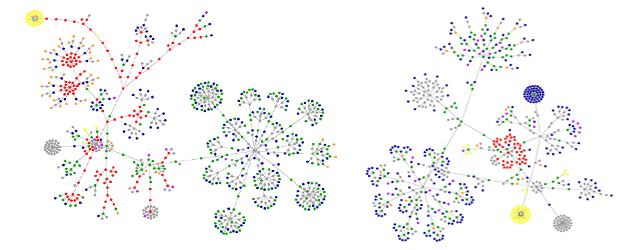Crystal balls beware of web 3.0
Most of us know web 3.0 from Facebook friend recommendations that seem to be eerily accurate, while others may have used Amazon to make purchases and probably made more purchases than intended. Wired came out with an interesting article about how companies can use some of our psychological behaviours to get us to buy more or return more often. One method is through predictive software which tries to “understand” who you are and what you are looking for. In Amazon’s case, they predict what you may like based on what others have ordered and associate similar products. The closely matched products are then displayed for you in the hope you will not only purchase the product you searched for but these additional products as well.
There are many companies currently using Web 3.0, as it aims to capitalize on these predictive patterns to up-sell and help cross sell in a multitude of services and industries online. However, there are also many other benefits derived from web 3.0, along with some current limitations of the technology.
Web 3.0 Benefits
Customer Relationship Management
- Promote cross-selling; companies can determine their clients needs to recommend other products that are similar or fall within a certain purchaser profile.
- Improved ad targeting: Peer39 matches advertisements to semantic natural language processing to increase the relevancy of the ads towards the targeted market.
- Improved ad content: Dapper is one such company that can analyze demographic, geographic, behavioural and contextual factors for improved and real-time ad content.
Knowledge Management
- Improved searching: Powerset is an example of on search engine that uses natural language processing to find better search results.
- Improved web optimization: Digger is one such company utilizing automatic tagging of information to increase the rate of correct and relevant detection.
Social Media
- Improve the reach and exposure: Headup is one service that tries to link information between Facebook, Twitter, Flikr, last.fm and other social networking sites to link together and analyze content.
- Measure the trends, tones and links between conversations; Chatmine is one company which attempts to determine the connection between community members, people and concepts.
- Determining quality of comments; blogs and other community based websites rely on user contribution, but not all of the additions are of acceptable quality. Semantic technologies could determine the relevancy and quality of contributions or material posted on the web to determine is applicability and user interest.
Web 3.0 Limitations
- Availability of the content, few pages are currently ready for the semantic web
- Standard relationships, development and evolution, given that common used ontologies must be created
- Scalability, once the semantic web is in use, it must be organized and managed in a way that can be scalable
- Multilinguality, the semantic web should overcome the language bias in order to facilitate the compilation of information posted in several languages
- Visualization, to overcome information overload, users will want to visualize the content of their research and obtain first relevant results
- Standardization of semantic web, since the effort to build its huge, a standardized effort should be made not to dissipate resources
Future evolution: Web 4.0
No one knows for certain how Web 3.0 will evolve, but it is known that it is becoming more integrated with mobile and non-PC computer devices. Additionally, location based services and augmented reality may become the building blocks for a web 4.0. Until the next paradigm shift occurs we can be left wondering what will be the next version, but we know it will become more knowledgeable and intelligent. With more computer and processing power, servers may be able to predict and service users before a demand even arises. Until the next format evolves, companies can currently take advantage of these technologies and try to incorporate services that may become a standard even demanded by clients. Click to find out more information on the web 3.0.



I liked your article is an interesting technology
thanks to google I found you
WONDERFUL Post.thanks for share.. I await more …
My partner and I don’t like to appear intruding but this entry make me wanna bust in here and also say what a excellent way to eat up couple of minutes of my time, truly very fascinating and a lot kudos for your efforts.